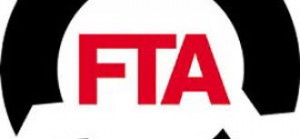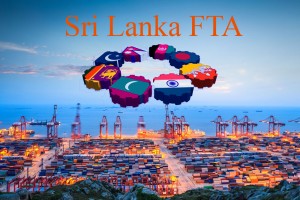Factfile Sri Lanka
Free Trade Agreement
 What is a Free Trade Agreement ?
What is a Free Trade Agreement ?
A Free Trade Agreement is an agreement between countries or groups of countries for the reduction of barriers to trade between them.
Effectively nations negotiate to lower taxes, duties and tariffs imposed on imported items and also work to reduce/streamline non- tariff barriers; customs, visas, documentation procedures, that have a bearing on trade.
An FTA does not mean that all trade barriers are reduced, ie that imports and exports can flow completely tax free between the nations concerned. Rather both parties work together to decide on terms and offer special concessions where possible.
Under an FTA there maybe categories where import duties are eliminated and others where they are simply reduced. There is also typically a negative list – items which will not be covered by the FTA where no concessions are offered.
FTA’s are a keystone of global trade and are widely used to boost trade between nations – major multilateral Free Trade Agreements like NAFTA (North American Free Trade Agreement) or the Association of Southeast Asian Nations Free Trade Area (AFTA) now cover Trillions of dollars in annual trade.
Sri Lanka’s Current FTAs –
Sri Lanka has signed bilateral Free Trade Agreements with India and Pakistan.
These agreements increased trade but have not fulfilled their full potential.
The Indo-Sri Lanka Free Trade Agreement (ISFTA) was signed on 28th December 1998 and entered into force with effect from 1st March 2000. While Sri Lankan exports to India increased from around $200 million to over $600 million under the FTA – the growth has been gradual and uneven. A large number of Indian goods are imported to Sri Lanka outside the FTA mechanism and several Sri Lankan export segments have not benefited from the FTA.
Pakistan-Lanka FTA. Operational from June 12, 2005. 206 Sri Lankan products enjoy duty free access to the Pakistani market including tea, rubber and coconut. 102 Pakistan products can be imported to Sri Lanka duty free. Under the FTA growth of Sri Lankan exports to Pakistan has been marginal from $40-50 million in 2004 to $60-70 million at present. Pakistans exports to Sri Lanka have doubled over the same period but there is potential for considerable further growth.
Asia Pacific Trade Agreement – APTA Multilateral FTA coveringBangladesh, China, India, Laos, South Korea, and Sri Lanka. Sri Lanka has been a member since 1975 – the block works to lower barriers between members via mutual agreement the last round of negotiations were in 2009.
South Asian Free Trade Area (SAFTA) ratified in force from January 2006. Afghanistan, Bangladesh, Bhutan, India, Maldives, Nepal, Pakistan and Sri Lanka (a combined population of almost 2 billion people). The original objective was to lower trade barriers between member nations with customs duties on all traded goods to be reduced to 0 by 2016. Progress towards the zero tariff objective has been limited and disagreements among SAFTA’s most powerful members Indian and Pakistan have prevented significant progress. Trade between SAARC countries has not grown at the desired pace with most SAARC countries trading far more outside the SAARC regionn than within it.

Sri Lanka is seeking to boost its economy, increase exports and broadly improve its trading position by pursuing several Free Trade Agreements (FTAs).
These agreements would allow Sri Lankan exporters tariff free access to a number of markets and exporters from these markets would also enjoy easier access to the Sri Lankan market.
The government envisions that through the FTAs foreign investors might use Sri Lanka as a base for trade, adding value in Sri Lanka and re-exporting goods to countries covered by the FTAs.
The aggressive pursuit of these agreements is in-line with the Sri Lankan government policy of establishing the country as a regional trading hub. With no new FTAs finalized since the Pakistan-Lanka FTA in 2005 Sri Lanka has considerable potential to improve its trading prospects with new FTAs.
5 new FTAs are currently being negotiated – we take a closer look at some at these agreements and their current status.
